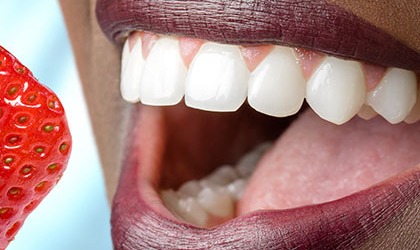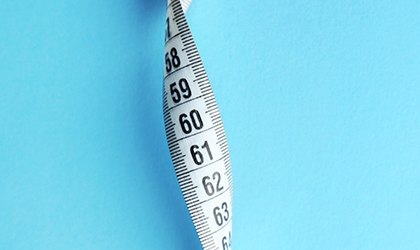
When it comes to nourishing your bones, the importance of weight cannot be overstated. In truth, you really can be too thin or too heavy. Though research consistently points to a calorie deficit compromising bone health, emerging data suggests obesity can also conspire to hijack your bones, causing low bone mineral density and paving the way for fractures. If you truly want to safeguard your bones, it starts with finding that sweet spot: a healthy weight for your height and build.
Obesity is not protective for bones
For years, scientists touted that obesity protected bones from fractures and weakened bones. The hypothesis appeared pretty plausible and the research sounded compelling. But, in recent years, new evidence has very quickly debunked this myth. In the past, experts widely believed fat tissue served as dense reservoirs of the hormone, oestrogen. And since oestrogen protects the bones, fat tissue can protect the bones, too? Correct? Wrongi. There’s much more to it than this. The missing piece of the puzzle is inflammation. Research continuously tells us that levels of inflammation are significantly greater in obese peopleii Scientists have now discerned that higher concentrations of inflammation in the body are directly associated with a higher risk of weakened bonesiii. And inflammation seems to have more of a profound impact on bones than oestrogen. Indeed, research suggests that fat and weakened bones have a reciprocal relationship: the more fat, particularly around the waist, the greater the risk of weakened bones. With this in mind, it would, in fact, seem that carrying excess weight doesn’t have bone-protecting properties after alliv.
Obesity leads to ‘fat bones’
Beyond carrying fat in hidden places like the muscles, liver, belly, thighs, and hips, obesity can make bone marrow swell in size, too. According to a new study conducted by The Harvard Medical School in Boston, which analysed 106 obese yet healthy men and women, researchers found that obesity can lead to ‘fat bones’, with apple-shaped people (those carrying weight around their middle) at the greatest riskv. You see, bone marrow is where osteoblasts – cells responsible for new bone formation – live. Experts believe large amounts of bone marrow fat will eventually make bones weak, porous, and prone to breakages. So, if your hip is filled with fat, it’s not going to be strong and sturdy. Simply put, higher levels of bone marrow fat will put you at a much greater risk of fracture and weakened bones.
Obesity increases the risk of bone fractures
Though there’s a wealth of evidence documenting how low body weight and low BMI are risk factors for bone fractures, a growing raft of data points to obesity making certain types of fracture much more likely, too. In one study carried out on a large group of men and women, researchers revealed that non-spine fractures were significantly higher in participants with a greater percentage of body fat, independent of body weightvi. The Global Longitudinal study of Osteoporosis in Women – in which 723 physician practices in 10 countries were involved – corroborated these findings, concluding that obese women accounted for 22% of all fracturesvii. This prospective cohort investigation also observed the risk of ankle and upper leg fractures were much greater in obese than non-obese women. Similar conclusions were made in an Italian study carried out on 2,235 post-menopausal women, where researchers illustrated that an increased BMI was directly linked to a higher risk of humerus fractureviii. Clearly, then, bigger isn’t necessarily better when it comes to bone health.
Next steps…
Of course, the safest way to protect your bones – and the rest of your body, for that matter – is by trimming down. Whether you want to lose 5 or 50 pounds, the tried-and-tested strategy to shed weight is reducing your calorie intake. Cutting 500 to 1,000 calories from your diet each day could help you drop around 1-to-2 pounds per week. Avoid sneaky saboteurs that will hijack your weight loss efforts, such as foods that are rich in refined sugars and fat: full-fat dairy, sweets, processed snacks, processed meat, white bread and pasta. Besides this, ensure half of your calories derive from complex carbohydrates, like brown rice, vegetables, oats, and sweet potatoes. Want to wave goodbye to those cravings? Up your fibre intake! This will promote optimal digestion and satiety, meaning you’ll feel satisfied for longer. Fresh veggies, fruits, and whole grains serve up a delicious amount of fibre. In addition to this, add lean proteins to your weight-loss arsenal. Grilled chicken, oily fish, and a small amount of red meat will aid with feelings of fullness and help you maintain mass as you lose weight. Oh, and don’t forget healthy fats, either! No – these foods won’t make you gain weight; on the contrary, they will support optimal bodily functions as you shed the pounds. Be sure to add a drizzle of olive oil, 1/8 of an avocado, or a handful of nuts to your meals.
But nutrition is only half the story. To shift excess weight and nourish your bones, you also need to move your body. When you’re obese, working out can feel like a herculean amount of effort; every step can put an enormous amount of pressure on your joints. However, trust us when we say it will be worth all the sweat and tears. Always ease yourself into exercising – start with 20 to 30 minutes of low-intensity activity every day. You could even divide this up into 10-minute intervals to maintain adherence and stamina. Eventually, you’ll be able to work towards more moderate intensity – exercising in a way that raises your heart rate and makes you feel more breathy. Water exercise, brisk walking, and cycling are stellar options since they won’t put too much pressure on your ankles, hips, back, and knees.
Finally, it’s worth mentioning that losing weight won’t happen overnight. You’ll likely encounter personal defeats, daily obstacles, and temptations that may lead you astray. Don’t let these knock your confidence; they’re a natural part of the journey. Remember, slimming down is a process. Stay focused. Be kind to yourself. And always reach out if you need help – you’re definitely not alone.
References:
-
Migliaccio. S., Greco. E., Fornari. R., Donini. L., Lenzi. A. (2013). Is obesity in women protective against osteoporosis? Diabetes, Metabolic Syndrome and Obesity: Targets and Therapy. ;273.
-
Esposito. K. & Giugliano. D. (2004). The metabolic syndrome and inflammation: association or causation? Nutrition, Metabolism and Cardiovascular Diseases.
-
Jeon. Y., Lee. J., Kim. S., Kim. B., Kim. S., Kim. Y. & Jeon. I. (2001). Association between bone mineral density and metabolic syndrome in pre- and postmenopausal women. Endocrine Journal. ;58(2), 87-93.
-
Sheu. Y. & Cauley. J. (2011). The Role of Bone Marrow and Visceral Fat on Bone Metabolism. Current Osteoporosis Reports. ;9(2), 67-75.
-
Press.rsna.org. (2019). SNA press release: Fat in Organs and Blood May Increase Risk of Osteoporosis. Available online: https://press.rsna.org/timssnet/media/pressreleases/pr_target.cfm?ID=681 [Accessed 25 April. 2019].
-
Hsu. Y., Venners. S., Terwedow. H., Feng. Y., Niu. T., Li. Z., Laird. N., Brain. J., Cummings. S., Bouxsein. M., Rosen. C. & Xu. X. (2006). Relation of body composition, fat mass, and serum lipids to osteoporotic fractures and bone mineral density in Chinese men and women. The American Journal of Clinical Nutrition. ;83(1), 146-154.
-
Abramof. R. (2012). Obesity Is Not Protective against Fracture in Postmenopausal Women. GLOW. Yearbook of Endocrinology. ;111-114.
-
Gnudi. S., Sitta. E. & Lisi. L. (2009). Relationship of body mass index with main limb fragility fractures in postmenopausal women. Journal of Bone and Mineral Metabolism. ;27(4), 479-484.
You Might Also Like

Olivia
Olivia Salter has always been an avid health nut. After graduating from the University of Bristol, she began working for a nutritional consultancy where she discovered her passion for all things wellness-related. There, she executed much of the company’s content marketing strategy and found her niche in health writing, publishing articles in Women’s Health, Mind Body Green, Thrive and Psychologies.
View More






